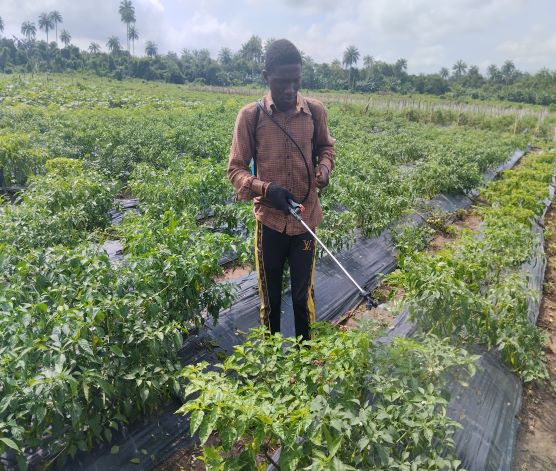
It is not unusual for farmers to encounter pests and the damage they can wreak on the entire farm operations.
Pests are considered to be any organism that causes damage to plants. Bacteria, fungi, moths, beetles, mites, and nematodes, are some of the common farm pests that can disrupt farmers’ day-to-day activities.
Although not every pest is an issue or a threat to the plant, nevertheless, they must be monitored and handled before they introduce risk into the system. Plants can resist minor damage from insects, illnesses, and weeds, but if a pest takes over a farm field, it would have a significant negative impact on the farm produce, the farm operations, and the local food supply.
Luckily, these pests can be controlled, and there are several strategies to combat and manage pests on a farm. A wide range of agronomic techniques is used by farmers to stop pest populations from growing to economically destructive levels.
Controlling pests is not as simple as it may appear, because trying to manage them may have a detrimental impact on crops. As a result, you must use effective pest control techniques. The following strategies are for you if you wish to successfully combat pests and keep them away from your farm.
Making Use of Pesticides
Using pesticides is one of the most popular ways to control pests and the impact they may have on a farm. Pesticides are substances that either eliminate or control the population of pests. More than half of our crops would be lost to pests without the use of pesticides.
It’s a myth that organic farmers don’t use pesticides, however, this is untrue since all farmers, including organic farmers, use pesticides; the difference is that the majority of organic farmers obtain their pesticides from natural sources.
However, you should be careful when applying pesticides, they can be harmful to the crops and can lead to serious consequences. Make sure you use them only as directed.
Crop Rotation
By using crop rotation, pests can effectively be kept from becoming used to the sorts of plants that are grown. The approach takes advantage of switching the crop varieties cultivated each year. This technique not only helps in controlling pests, but also improves soil fertility.
You’ll give those pests the opportunity to re-establish and get even worse if you plant the same hosts that they seek out. The problems will ultimately go away if you grow something from a different group of crops that don’t often host the issues.
Crop rotation keeps pests in a stage with poor mobility and a constrained range of host plants for the duration from the end of one crop to the start of the next in order to effectively manage it.
Another additional advantage of crop rotation is that it enhances the soil. The soil will get depleted of the nutrients needed by a specific crop if the same thing is consistently grown in the same place. The demand for soil fertility is decreased by switching to a new crop periodically.
Intercropping
Intercropping is known as the technique of cultivating two or more crops simultaneously in the same area. Plant a wide range of species of crops and alter the crop pattern. Crops can be planted in any row, alternate rows, or alternately with other crops in the same row.
Affiliated crops in the intercrop can cause attack escape in a variety of ways, all of which include a slower rate of population expansion for the pests. The companions make the attacked component’s plants less suitable hosts; also, they might directly obstruct pest activity.
When using intercropping methods to manage the widespread pests, crops that have an impact on a targeted insect can serve as either a repellent, an attractant, or a mix of the two when planted next to crops that the insect would attack. So your choice of crops is very important.
In addition to its ability to control pests, intercropping has other advantages, including greater production, a more balanced distribution of resources, and a decrease in farm risk.
Handpicking Visible Pests
This may be the easiest and cheapest yet most efficient method of management, particularly for large visible pests and weeds. You don’t have to wait till you see a pest-control instrument. When pests are spotted, pick them up and eliminate them.
This doesn’t require any special type of skill. There are various pests we don’t consider as pests such as caterpillars. Once they are spotted on the plants, make sure you handpick them from the plants.